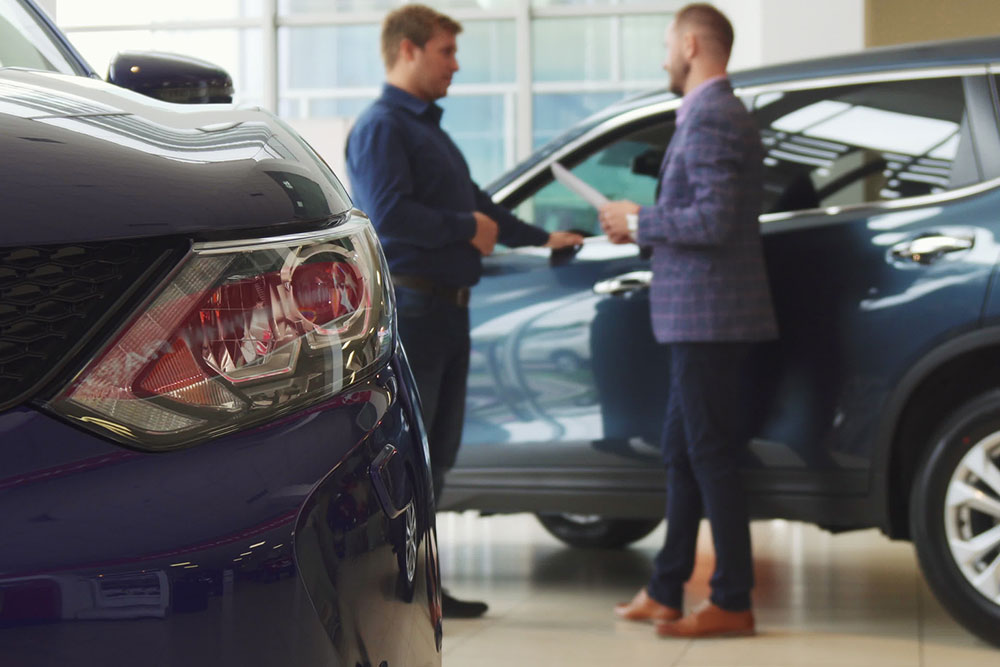19 common mistakes to dodge when buying a car

Buying a car is a major decision that can either be exhilarating or exasperating, depending on how well you navigate the process. Unfortunately, there are several common car-buying mistakes that can turn your joy ride into a bumpy one. In order to avoid being stuck with a car that you don’t want in the long run, it is important to learn how to avoid certain pitfalls throughout the vehicle-buying process.
Skipping Research
By starting the car-buying journey without extensive research, one risks making poor choices, overspending, and experiencing buyer’s remorse. Conduct thorough research by defining needs, budgets, and preferences. Also, explore different makes and models, read reviews, and compare prices.
Overlooking a Budget
Neglecting to set a budget before one begins shopping can lead to financial potholes, causing overspending, debt, and buyer’s regret. Determine the budget based on the financial situation, considering the purchase price, ongoing expenses (insurance, maintenance, fuel), and financing options. Creating a financial roadmap will help one stay on course.
Neglecting Pre-approval
Arriving at dealerships without securing pre-approved financing is like setting sail without a compass. It can lead to higher interest rates and limited negotiation power. Research financing options from banks, credit unions, or online lenders. Obtain pre-approval to establish a clear budget and improve one’s bargaining position.
Not Test Driving
If one skips the test drive, one might find that their car isn’t as comfortable, handles poorly, or lacks expected features once it hits the road. Always schedule a test drive. Pay attention to how the car feels on the road, its visibility, and the functionality of its features.
Focusing Solely on Monthly Payments
Zeroing in on monthly payments alone can lead to longer loan terms, higher overall costs, and negative equity. Consider the total cost of the car, including interest rates and loan duration, rather than just monthly payments. Aim for the shortest loan term one can comfortably afford.
Not Considering Depreciation
Ignoring a car’s depreciation rate can lead to substantial damage over time. Research the expected depreciation of the make and model one is interested in. Consider opting for vehicles with lower depreciation rates to preserve investment costs.
Forgoing a Vehicle Inspection
Buying a used car without a thorough inspection may lead an individual to encounter hidden problems and unexpected repair costs down the road. Have a trusted mechanic inspect any used car being considered; they can identify potential issues and help one make an informed decision.
Neglecting Vehicle History Reports
Neglecting a vehicle’s history can lead to purchasing a car with a concealed past, including accidents or title issues. Request a vehicle history report for used cars. It provides valuable insights into the car’s background, helping buyers steer clear of any skeletons in the trunk.
Overlooking Insurance Costs
It is always advisable to obtain insurance quotes for the cars that are being considered to include insurance expenses in the budget. This step helps one avoid unexpected and potentially high insurance costs down the road.
Not Seeing the Maintenance Costs
Beyond the purchase price and insurance premiums, maintenance is an ongoing expense. Consider factors like the availability and cost of replacement parts, routine servicing needs, and the reputation for reliability associated with the make and model. Some vehicles may have higher maintenance costs due to specialized parts or complex systems, so be sure to factor this into your budget.
Not Noting the Resale Value
It’s easy to focus on the excitement of buying a car and forget about the future. However, thinking about the car’s resale value upfront can save one money in the long run. Certain makes and models hold their value better than others, which can significantly impact the wallet when it is time to sell or trade in the vehicle. Research historical resale values for the cars being considered.
Ignoring Environmental Considerations
Aside from fuel efficiency, it’s also worth exploring the environmental impact of the chosen vehicle. With growing concerns about climate change, many people are considering more eco-friendly options. Electric and hybrid vehicles are becoming increasingly popular due to their lower emissions and fuel costs. Thus, one must factor in environmental values when making a decision.
Not Checking the Safety Features
Safety should always be a top priority when buying a car. Modern vehicles have various safety features, including airbags, anti-lock brakes, traction control, and more advanced driver-assistance systems like lane-keeping assist and adaptive cruise control. Research the safety ratings and features of the prospective cars, especially if there are specific safety concerns or requirements.
Ignoring the Warranty Coverage
The warranty provided with a new or certified pre-owned vehicle can significantly impact one’s long-term ownership experience. Familiarize oneself with the warranty terms, including coverage duration and what’s included. Some warranties may cover routine maintenance for a specific period, potentially reducing maintenance costs.
Overlooking the Ownership Duration
Consider how long one plans to keep the vehicle. If one intends to keep it for many years, reliability becomes paramount. If the preference is to switch vehicles more frequently, factors like depreciation and resale value might be more critical. One’s intended ownership duration can influence the final choices significantly.
Not Going Over the Tax Implications
Depending on where one lives, there may be tax incentives or penalties related to the car purchase. For example, some states offer tax credits for electric or hybrid vehicles to encourage environmentally friendly choices. On the other hand, there could be higher taxes associated with certain vehicle types. Be aware of the local tax regulations to understand the financial implications.
Not Checking Reviews and Recommendations
Don’t underestimate the value of seeking advice from others who have owned or are knowledgeable about the cars that are being considered. Online reviews, forums, and recommendations from friends and family can provide insights into real-world experiences with specific vehicles. These sources can help one uncover potential issues or advantages the research might have missed.
Ignoring an Ownership Costs Calculator
Online tools and calculators are available to help buyers estimate the total cost of ownership for a specific vehicle. These tools consider factors like fuel, insurance, maintenance, depreciation, and financing costs. Using such a calculator can provide one with a more accurate picture of what to expect to spend over the life of their car.
Not Considering the Future
Lastly, consider how one’s needs might change in the future. If one is planning to start a family, for instance, one may need a larger vehicle with ample rear-seat space and safety features designed for child seats. Thinking ahead can prevent the buyer from outgrowing their vehicle prematurely.



